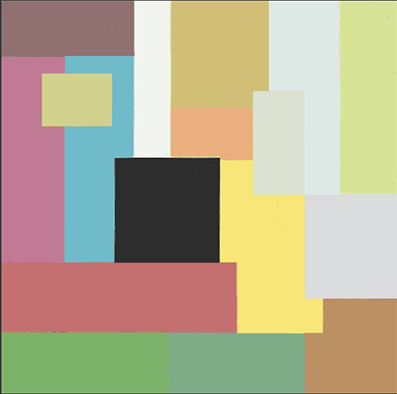The simple answer is “no”
What we see is not light, but experiences created by neural networks within the eye and the brain (what I often refer to as “eye/brain systems”). Although it is true that the visual world that we know could not happen in the absence of the patterns of light that enter our eyes, it is only made manifest to us as a result of what is going on inside our heads. This Post provides a link to Chapter 9 of my book “Painting with Light and Colour”, which describes two demonstrations that show just how great can be the difference between an image predicted on the basis of readings from a light meter and the one we actually experience.
Edwin Land’s demonstrations
The demonstrations have a personal importance because they played a key role in the story of my quest to explain the paradox inherent in the dogmas of Marian Bohusz-Szyszko (explained in Chapter 2). They were devised by Edwin Land, the famous inventor, as a part of his investigation of the phenomenon of “colour constancy”.
.
CHAPTER 9-SEEING LIGHT
.
More on Land’s demonstration
For another relevant source of information on Land’s demonstration please consult “Land’s colour constancy demonstration”, an edited version of a chapter from my book “What Scientists can Learn from Artists”. You might also want to read the original article in “Scientific American, December 1977”. In this Land explained what he described as his “Retinex theory of colour vision”.

.
Other chapters from “Painting with Light and Colour”:
- Introduction: the little known Science behind many of the original practical suggestions.
- Chapter 1 : The dogmas
- Chapter 2 : Doubts
- Chapter 3 : The nature of painting
- Chapter 4: Renaissance ideas
- Chapter 5 : New Science on offer
- Chapter 6 : Early Modernist Painters
- Chapter 7 : The perception of surface
- Chapter 8 : Seurat’s new idea
- Chapter 9 : Seeing light
Other Posts on colour and light in painting:
- What are colourists (1): Some of the many meanings of the word
- What are colourists (2): Difference between meaning of the word for Venetian Colourists and for Modernist Colourists?
I find Francis’ chapters on “Painting with light and colour” extremely informative and helpful especially when mixing paints and applying them to a canvas or other surface. Understanding how the eyes registers and the brain interprets light and color helps me to better use color and surface to represent my inner feelings of the work I’m attempting to create.
Thank you Francis. This post is particularly packed with fascinating and useful information on reflected light in all kinds of contexts. It is the most thorough investigation on this subject that I have ever read as it applies to artists in particular, and I know you’ve written much more about it in other chapters as well!
Very interesting science to be considered during our artistic quests!
I just reread this chapter for a second or perhaps even a third time, and I must say how fascinating it is. I needed multiple reads to allow the content to sink in, but I finally feel I’m grasping this very valuable information!